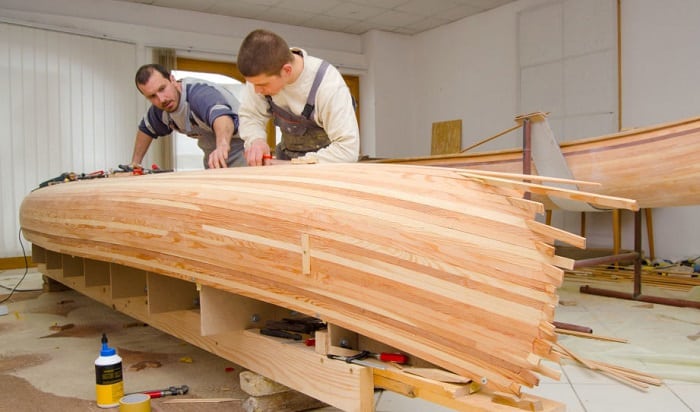
Beyond the Plans: Unveiling Hidden Aspects of Wooden Boatbuilding
“How to Make a Wooden Boat with Simple and Easy-to-Follow Instructions†â€" the title itself promises a straightforward journey. But the reality of crafting a wooden boat is far richer, encompassing challenges and rewards rarely found in typical how-to manuals. This review delves beyond the surface, exploring lesser-known aspects crucial for success and enjoyment.
The Unsung Heroes: Material Selection and Sourcing
Most guides focus on the what of materials â€" oak, cedar, marine plywood â€" but neglect the why and where. This is a critical oversight.
Q: How does wood sourcing impact the final boat’s performance and longevity?
A: The answer goes beyond simple species selection. Consider the tree's growth rate. Faster-growing wood might be cheaper but potentially less dense and durable. Look for slow-grown timber with tight grain, indicative of strength (refer to research by the US Forest Service on wood properties). Sourcing locally reduces carbon footprint and often connects you with experienced lumberyards providing advice on specific wood characteristics for boatbuilding. A responsible approach to sourcing aligns with growing sustainable practices within the woodworking community.
Q: Beyond the "standard" woods, what alternative materials offer unique advantages?
A: Explore readily available reclaimed wood â€" old railway sleepers, wharf pilings â€" for a unique aesthetic and potentially more sustainable option (while ensuring proper treatment for marine environments). Research on the durability of reclaimed woods in maritime settings is expanding, with studies showcasing surprisingly good performance in certain applications. Consider composite materials like fiberglass-reinforced wood, which can improve strength and reduce weight.
Beyond the Blueprint: Embracing Imperfection and Innovation
Many boatbuilding guides present a rigid, “one-size-fits-all†approach. But real-world projects demand adaptability.
Q: How can a beginner overcome challenges presented by wood imperfections?
A: Knots, cracks, and variations in grain are inevitable. Instead of viewing them as flaws, consider them opportunities for creative problem-solving. A simple crack might become a design feature, inspiring a unique joint or inlay. Many experienced boat builders will confirm the importance of understanding wood behavior and using these variations as a design feature. This fosters personal expression and creates a boat with a unique narrative, rather than just a flawless copy of the plans.
Q: How can modern technology enhance the traditional boatbuilding process?
A: 3D modeling software allows for detailed planning and visualization, reducing errors and optimizing material usage. Digital fabrication tools, like CNC routers, provide precision cutting and shaping, significantly speeding up construction. This combination of traditional craftsmanship and digital innovation is gaining traction; studies show increased efficiency and reduced waste in boatbuilding workshops using these techniques.
The Human Element: Community, Mentorship, and Continuous Learning
No book can fully capture the nuances of boatbuilding. Learning from experienced craftspeople is invaluable.
Story: I met an old fisherman once, whose small wooden boat had seen decades of use. He didn’t have fancy plans; his knowledge was passed down through generations, each imperfection a lesson learned, each repair a testament to resilience. This is the kind of tacit knowledge often overlooked in the pursuit of polished instructions.
Joining a local woodworking club or online forum provides access to a wealth of collective knowledge and practical advice. Engaging with these communities is crucial for both skill development and fostering a sense of shared passion.
In conclusion, “How to Make a Wooden Boat†should be seen as a starting point, not the final word. By exploring the nuances of material sourcing, embracing creative problem-solving, and leveraging technological advancements, we can elevate the process from mere instruction-following to a deeply rewarding journey of craftsmanship and self-discovery.









No comments:
Post a Comment